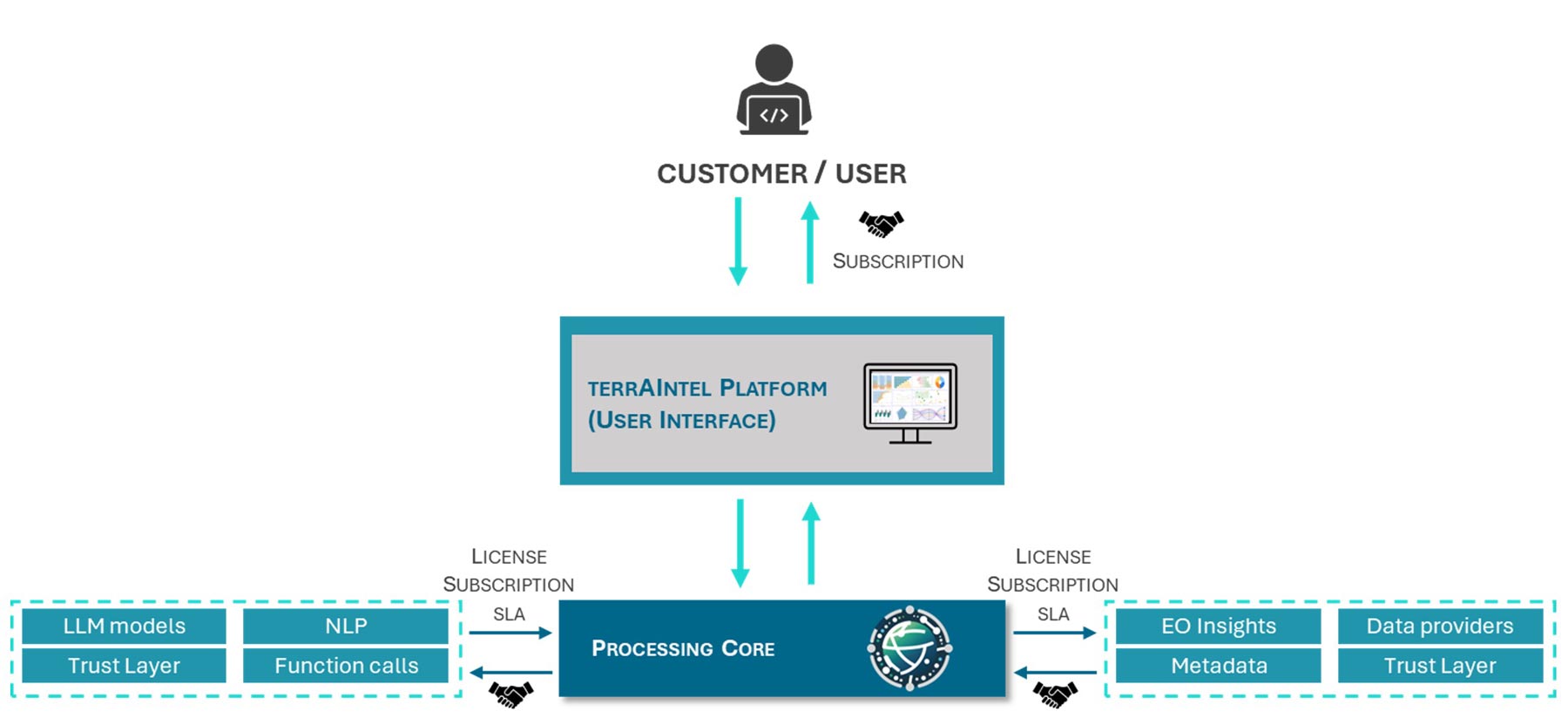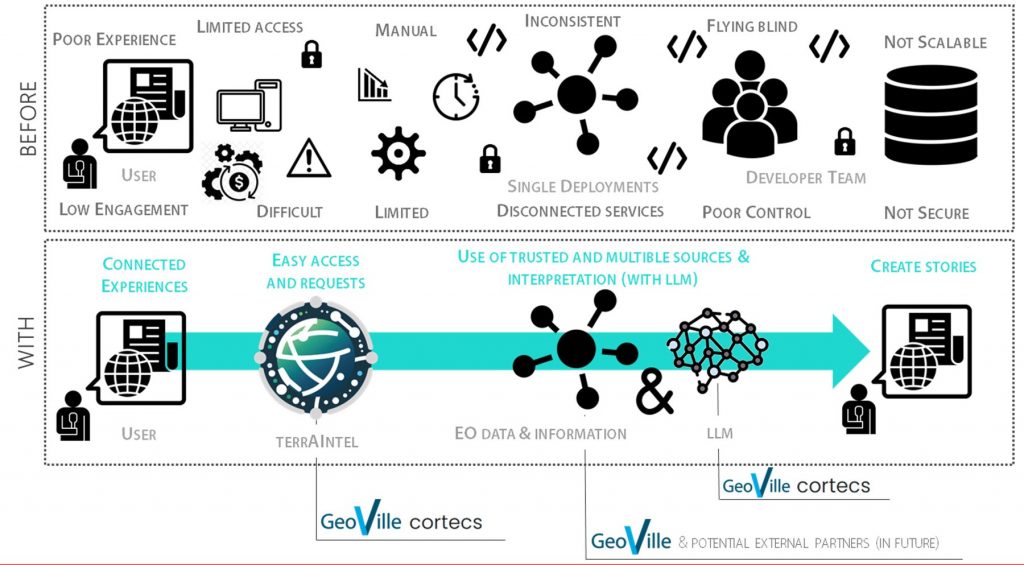
 Data Analytics, Insights & Applications
Data Analytics, Insights & Applications terrAIntel addresses the key challenges faced by non-technical users, particularly in the field of journalism. These challenges include technical barriers to accessing EO data products, limited interpretability without specialised expertise, processing delays that hinder timely reporting, and a lack of transparency in data sources and methodologies.
To overcome these obstacles, terrAIntel integrates Natural Language Processing (NLP) capabilities, allowing users to pose geospatial questions in natural language and receive intuitive, data-driven responses. This innovation has developed a demonstrator that transforms dense, complex EO data products into actionable insights, empowering non-expert users to confidently utilise EO data products for fact-based reporting, environmental monitoring, and urban development while minimising on-ground risks.
Key features include a user-friendly dashboard for data visualisation, customisable fields of interest, and metadata transparency to foster trust in the insights provided. terrAIntel streamlines the entire EO data product lifecycle by accessing diverse datasets and delivering tailored, comprehensible outputs for demonstration. This approach not only simplifies data interpretation but also promotes sustainability through improved data reusability.
terrAIntel primarily serves non-experts, especially journalists, seeking intuitive access to EO data products. Key users include digital and investigative journalists, data storytellers, and, in the future, corporate users in fields like urban planning, disaster management, and environmental monitoring. These users often lack the technical skills to navigate complex EO data products or interpret outputs effectively.
By enabling users to ask geospatial questions in natural language and providing actionable insights through visualisations like maps and graphs with transparent metadata, terrAIntel addresses challenges of accessibility, interpretability, and timeliness. This allows users to make informed decisions without requiring specialised training. Feedback and pilot testing from journalists and media organisations ensure the platform meets their needs for accurate reporting and storytelling.
The targeted customers and users of terrAIntel are global, with early adopters based in Austria, South Africa, and North America. These hubs serve as hubs for extensive networks of data journalists focused on digital media. The platform’s scalability and broad applicability ensure accessibility to global markets, supporting diverse industries while advancing the vision of expanding EO data usage among everyday users.
terrAIntel provides an intuitive, user-friendly interface powered by Natural Language Processing (NLP), allowing users to query EO data in natural language. What sets terrAIntel apart is its ability to grant access to EO data products and transform complex datasets into actionable intelligence through automated interpretation, complemented by visualisations such as maps and graphs.
This approach reduces the need for prior training and makes data interpretation more accessible, significantly enhancing the usability of EO data across industries. Key features include customisable fields of interest, real-time data access, and transparent metadata, fostering trust and ensuring accuracy.

The EO industry faces a significant challenge with an overwhelming influx of data that is difficult to manage, access, and reuse effectively. This often results in EO data products being created as one-off outputs and subsequently forgotten. terrAIntel addresses this problem by enabling a broader range of users to interact with EO data without requiring extensive prior training. By improving accessibility and usability, terrAIntel empowers non-experts to derive meaningful insights, expanding the industry’s user base and promoting long-term data sustainability.
What distinguishes terrAIntel from competitors is its dual focus on both accessibility and interpretability of EO data products. While many solutions emphasise data access, terrAIntel goes further by helping users fully understand and utilise EO data. Through Natural Language Processing (NLP), automated interpretation, intuitive visualisations, and interactive queries, terrAIntel transforms complex datasets into actionable outputs, reducing reliance on specialised expertise and making EO data approachable to a wider audience.

The terrAIntel activity kicked off on 9 December 2024 and has reached the Critical Design Review Milestone in September 2025. The project consortium is progressing through implementation and verification against the baselined requirements and validation plans. Outreach has begun with the consortium’s presence at ESA’s Living Planet Symposium, where a short marketing video supported networking and awareness.
